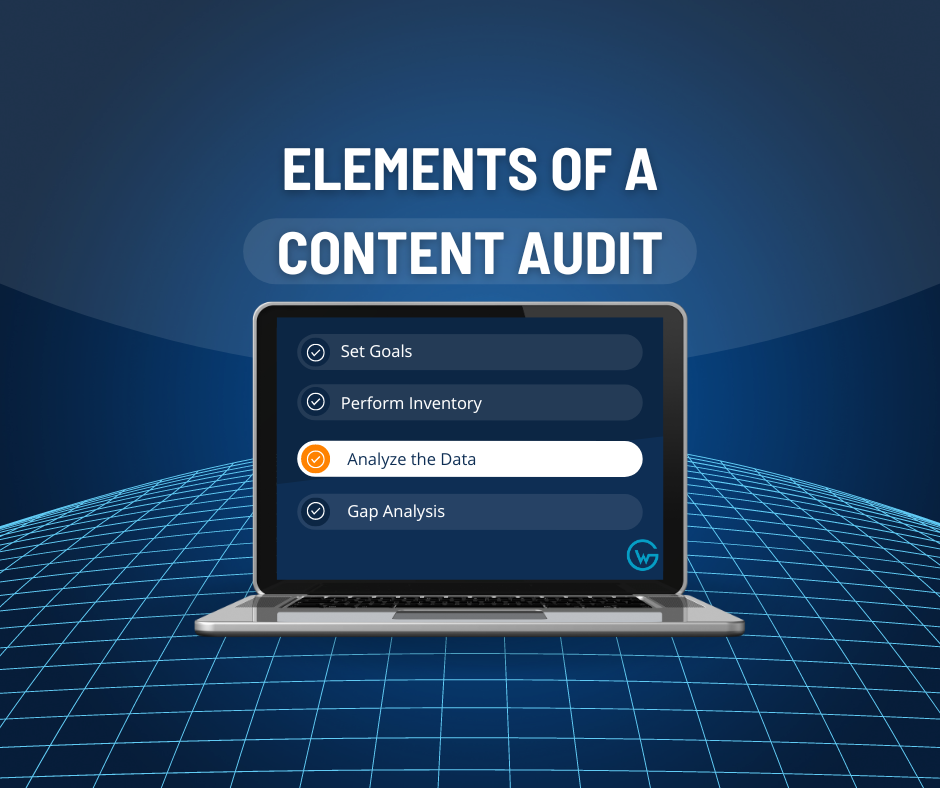4 Important Elements of a Content Audit

The content you have on your website can drive a steady stream of new leads and sales. It allows customers to find and connect with your brand and informs them of the services or products you offer.
However, it’s not as easy as hiring a high school kid to write $20 blog posts. Nor is it a one-time task. For the best chances of success, you’ll need to produce high-quality content that speaks to your target audience regularly.
The best way to get started is to perform a content audit. Read on to learn more about the four key components of how to conduct a successful content audit.
What is a Content Audit?
The process of monitoring and analyzing your existing content is known as a content audit. It can help identify areas that need improvement, better align your content strategy with your business goals, and maximize your return on investment (ROI).
Benefits of a Content Audit
Before we dive into the process, let's look at the benefits of conducting a content audit. A comprehensive content audit can help you:
- Improve the quality and relevance of your content to serve your target audience better.
- Identify outdated or underperforming content that needs updating, consolidation, or removal.
- Enhance your search engine optimization (SEO) efforts by optimizing high-performing content and addressing underperforming pieces.
- Discover gaps in your content strategy that can be filled with newer and more valuable content.
- Ensure your content supports and aligns with your overall business and marketing goals.
Here are four essential components of a successful content audit:
Set Goals
The first step in a content audit is to establish clear, measurable goals. These goals should align with your broader business and marketing objectives, such as increasing website traffic, generating leads, improving user engagement, or boosting conversions.
By setting specific goals, you can focus your audit efforts and measure the impact of your content optimization initiatives. Examples of content audit goals include:
- Increase organic search engine traffic by 20% over the next six months.
- Improve user engagement metrics, such as average time on page and social shares.
- Boost conversions by optimizing content for targeted keywords and calls-to-action (CTAs).
Perform Inventory
Once you've set your goals, the next step is to create a comprehensive inventory of all the content on your website. This inventory should include details such as the title, URL, content format (e.g., blog post, video, infographic), and publication date. You can use content audit tools, website crawlers, or even manually compile this information in a spreadsheet.
Organizing and categorizing your content is essential for a smooth audit process. Group your content by topic, format, or target audience to make an assessment and prioritization easier. Additionally, categorization can help you identify patterns or trends that may influence your content strategy moving forward.
Analyze the Data
With your content inventory in place, the next component of a content audit is data analysis. Evaluate the performance of each piece of content based on key performance indicators (KPIs) that align with your audit goals. These may include metrics such as page views, bounce rate, time on page, social shares, and keyword rankings.
When analyzing your content, consider the following factors:
Relevance—Is the content still relevant and valuable to your target audience? Information can change in certain industries over time. For example, perhaps your company blog provides medical advice. Is the 5-year-old article about eggs causing bad cholesterol still valid? Or has new medical information emerged that contradicts that?
Accuracy—Is the information provided in the content accurate and up-to-date? Take note of whether the content is well-written or has misspellings and outdated or completely wrong information. You can use a tool such as Grammarly to help identify poor grammar and other issues.
Engagement—How well does the content resonate with your audience based on engagement metrics? You may need to use a free tool such as Google Analytics to measure engagement. Look at how often people click the call-to-action button or fill out the contact form. Consider if that page is the last page they browse or if they look at other parts of the website.
SEO performance—How well is the content ranking in search engines for targeted keywords?
Gap Analysis
The fourth component of a content audit is conducting a gap analysis. This process involves identifying gaps in your existing content strategy that can be filled with new, valuable content.
By examining your content inventory and performance data, you can uncover areas where your content may not be addressing the needs or interests of your target audience.
Consider the following questions when conducting a gap analysis:
- Are there topics or areas of interest that your current content does not cover?
- What content topics do your competitors cover? Are you missing anything?
- How well are you internally linking to other articles?
- How well are you using your targeted keywords? Are you over-using those keywords and creating keyword spam—which is a huge no-no in Google’s eyes.
Let Witmer Group Help with Your Content Audit
A content audit is essential for any business that seeks to grow its audience while driving new leads and sales. Witmer Group can help you with your content audit by diving deep into your website and creating a turnkey report with actionable steps.
Click HERE to download our free eBook and discover more in-depth tips about performing a content audit.

